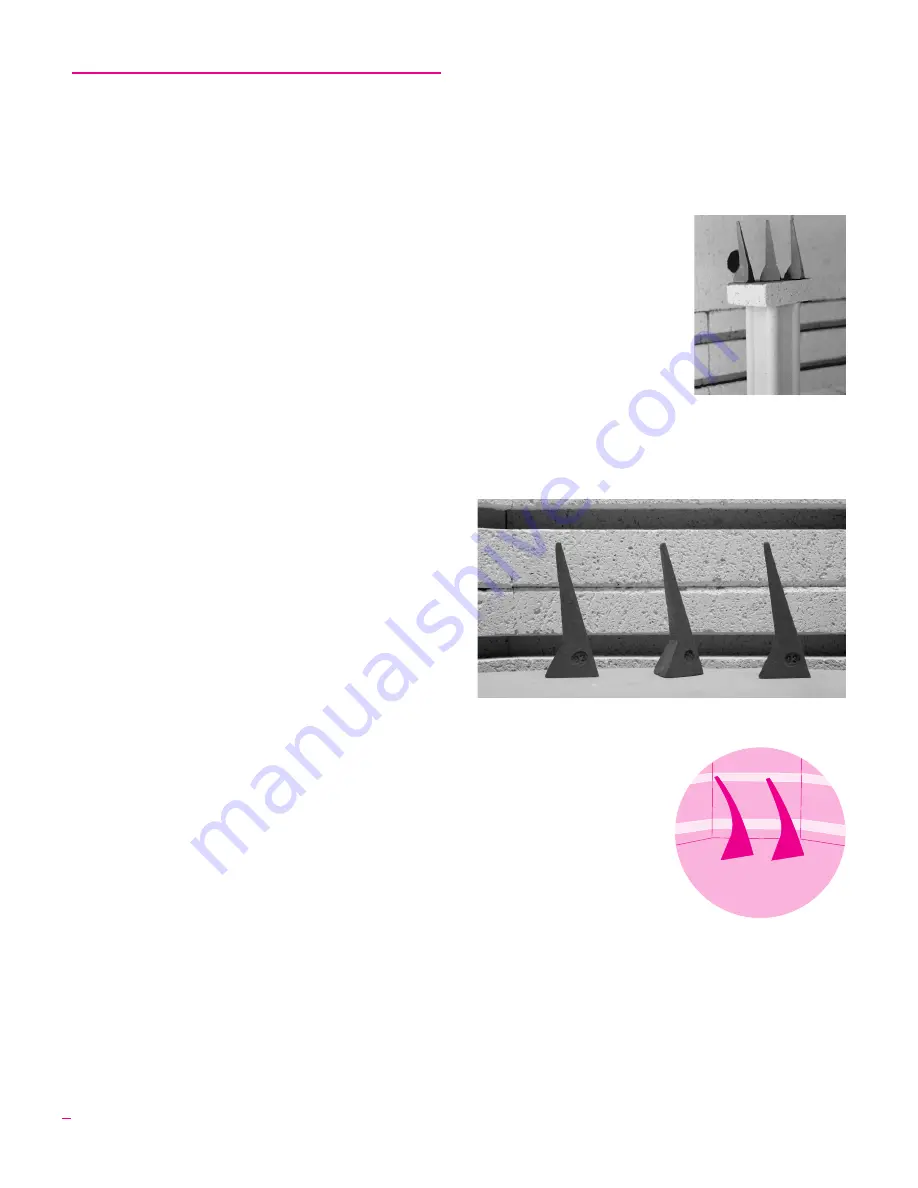
Chapter 2
Cone-Fire
In this chapter you will learn to . . .
G
See witness cones at high temperatures
G
Program a Cone-Fire program in minutes
G
Pre-heat the ware so it doesn’t explode
G
Bend a cone by adding extra hold time
G
Cool slowly (called down fire) to alter glazes
Cone-Fire mode is based on Orton pyro-
metric cones. It is not designed for heat
treating, glass fusing and enameling. For
these firings, see “Ramp-Hold,” pages
12-15. Use Ramp-Hold to fire ceramic
pieces that require a custom firing
schedule, such as some types of stone-
ware sculpture or crystalline glaze.
Before using Cone-Fire mode, read all of
this chapter. Have your controller in
front of you so you can try out the keys as
you read. For more details on pyrometric
cones, please see your kiln manual.
Pyrometric Witness Cones
Question
A cone 5 firing was 7°F below the target
listed in your manual, and a cone 6 firing was 22°F
below the target. Is this typical and okay? Is the dig-
ital controller on my kiln operating normally even
though it did not achieve the controller tempera-
tures that were programmed at cone 5 and 6?
Answer
This is normal for Cone-Fire operation. If
the kiln fires slower than the normal rate, it will
shut off at a lower temperature. If the kiln fires
faster than a normal rate, it will shut off at a higher
temperature, sometimes by only a few degrees.
The Sentry Xpress controller shuts off automatically
without cones. Nevertheless, every ceramic firing should
include at least one witness cone (also called the shelf
cone). The witness cone is placed inside the kiln. The wit-
ness cone is the most accurate measurement of heat work in
a ceramic firing.
If you fire the same size load and type of ware regularly,
the witness cones let you compare one firing to the next and
alert you when something is wrong. For example, if the wit-
ness cone bends farther and farther with each consecutive
firing, this may indicate thermocouple temperature drift.
Note:
If the bending of the witness cone does not
match the Cone-Fire shut-off, you may want to ad-
just Cone Offset (page 16) or Thermocouple Off-
set (page 20). If the witness cones bend inconsis-
tently from one firing to another, see “Sentry
Troubleshooter,” a separate publication.
How to Position Cones on the Shelf
(for Ceramic Kilns)
Position the witness cones so
you can see them through a
peephole during firing. If the
kiln takes longer than usual to
fire, you may wonder if some-
thing has gone wrong and the
kiln is over-firing. But by seeing
the cones, you will know how the
firing is actually progressing.
If you follow these guidelines,
you should be able to see the
cones even at cone 10:
1
Place the cones 8” - 12”
away from a peephole. Positioning them closer
makes them difficult to see.
2
Have enough space
around the cones to
keep them from touch-
ing a piece of ware
when they bend.
3
Position cones so that
when viewed from the
peephole, they are sil-
houetted by a glowing
heating element on the
o p p o s i t e k i l n w a l l .
(Keep cones at least 2”
from an element.)
4
The element that silhouettes the cones should be
level with the lower part of the cone. If the element
is in line with the upper part of the cone, you won’t
be able to see the cone when it bends.
Sentry Xpress 5 Cone-Fire / Ramp-Hold
8
Do not leave your kiln unattended during operation.
Use self-supporting witness
cones on the shelf. They stand
upright without cone holders.
Silhouette the lower part of the
cone against an element. Keep
the cone 8” - 12” away from the
peephole.
The heating element in the background should be lined up with the lower
part of the witness cones. If the element is too high, the tips of the cones
will disappear from view when they bend.









































